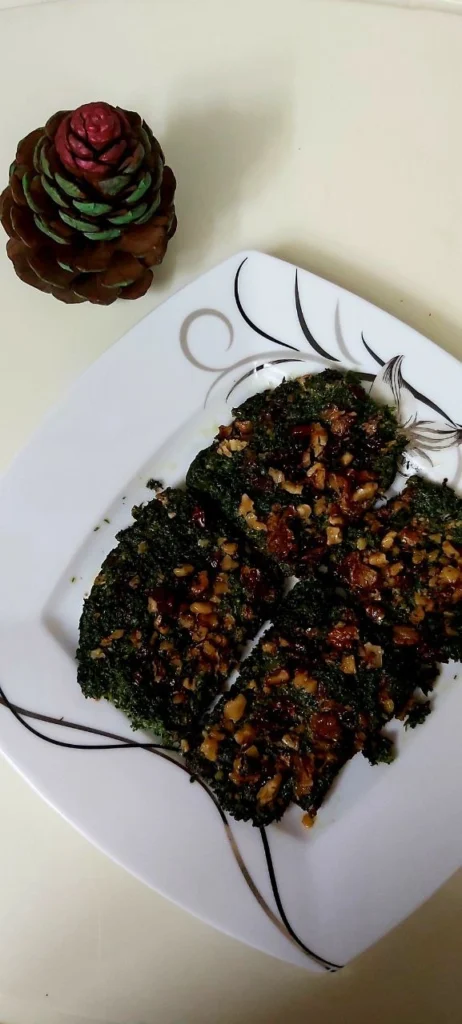Cooking Coco Sabzi Like a Pro

Kuku Sabzi is a beloved Iranian dish made with fresh herbs, eggs, and aromatic spices. Packed with flavor, nutrients, and cultural significance, this traditional Persian herb frittata is as beautiful on the plate as it is easy to make. Whether you’re exploring Persian cuisine for the first time or looking for a healthy, plant-forward meal, Kuku Sabzi is a fantastic choice.
In this article, we’ll cover what Kuku Sabzi is, its health benefits, how to make it, dietary variations (vegan, baked, low-calorie), and why it deserves a spot in your kitchen.
What Is Kuku Sabzi?
Kuku Sabzi is a traditional Persian dish made by combining finely chopped fresh herbs—typically parsley, cilantro, chives or leeks, dill, and spinach—with eggs, turmeric, salt, and pepper. Optional additions include barberries (for tanginess) and chopped walnuts (for crunch). The mixture is then fried or baked like a frittata.
It’s commonly served as a light main course or side dish during Nowruz (Persian New Year), picnics, or family gatherings.
Health Benefits of Kuku Sabzi Ingredients
The power of Kuku Sabzi lies in its super-nutritious blend of herbs and whole-food ingredients:
1. Parsley
Rich in vitamin K, vitamin C, and antioxidants, parsley supports bone health and boosts immunity.
2. Cilantro (Coriander Leaves)
Cilantro is known for its digestive benefits, anti-inflammatory compounds, and ability to help detoxify the body.
3. Chives, Leeks, or Green Onions
These allium vegetables are great for heart health, blood sugar regulation, and provide a mild onion-like flavor.
4. Dill
Dill adds a distinctive flavor and is also rich in calcium and antioxidants that support overall health.
5. Spinach
Loaded with iron, folate, and fiber, spinach enhances energy levels, supports digestion, and combats anemia.
6. Eggs
Eggs are an excellent source of complete protein, essential fatty acids, and vitamins like B12 and D.
Optional ingredients like walnuts (good fats and omega-3s) and barberries (vitamin C and antioxidants) elevate the nutrition even more.
Traditional Kuku Sabzi Recipe
Ingredients:
500g (about 4 cups) finely chopped fresh herbs (parsley, cilantro, chives, dill, spinach)
4 large eggs
2 tablespoons barberries (optional)
3 tablespoons chopped walnuts (optional)
1 tsp turmeric
Salt and pepper to taste
Oil for frying

Instructions:
In a large bowl, whisk the eggs until frothy.
Add the chopped herbs, turmeric, salt, and pepper.
Gently stir in barberries and walnuts if using.
Heat oil in a non-stick frying pan over medium heat.
Pour the mixture into the pan and press it down evenly.
Cover and cook for about 8–10 minutes, until the edges are golden.
Flip the kuku (or cut and flip in sections) to cook the other side for another 5–7 minutes.
Remove from heat, slice, and serve warm or at room temperature.
Baked or Oven-Broiled Kuku Sabzi (Healthier Version)
If you’re watching your calorie intake or avoiding fried foods, you can easily bake your Kuku Sabzi in the oven:
Preheat oven to 375°F (190°C).
Pour the mixture into a greased oven-safe dish or muffin tin.
Bake for 20–30 minutes until firm and golden on top.
Let it cool slightly before slicing.
This method reduces oil use and makes for an easy, mess-free version of the classic.
Vegan Kuku Sabzi
You can make a completely vegan version of Kuku Sabzi by replacing eggs with plant-based binders:
Vegan Egg Substitutes:
Chickpea flour mixture (1 tbsp chickpea flour + 2 tbsp water = 1 egg)
Ground flaxseed (1 tbsp flaxseed + 3 tbsp water = 1 egg)
Vegan egg replacers available in stores
Simply mix your herbs with the plant-based binder and seasonings, and cook the same way as traditional kuku—either fried or baked.
Calories and Nutrition Facts
The calorie count in Kuku Sabzi depends on the method of cooking and ingredients:
A fried slice with oil, walnuts, and barberries: approximately 180–220 kcal
A baked slice without nuts or barberries: approximately 100–120 kcal
Kuku Sabzi is:
Low in carbs
Rich in fiber
Moderate in healthy fats
High in vitamins A, C, K, and iron
Tips for the Best Kuku Sabzi
Use fresh herbs whenever possible for the best color, flavor, and texture.
If using frozen herbs, be sure to drain the water completely to prevent sogginess.
Add 1 tablespoon of flour or breadcrumbs to help bind if needed.
To prevent barberries from burning, soak them in warm water briefly before adding them in.
For a boost of flavor, you can add a clove of minced garlic or finely chopped onion to the mix.
Serving Suggestions
Kuku Sabzi can be served hot or cold and pairs well with:
Lavash or pita bread
Plain yogurt or mast-o-khiar (Persian yogurt with cucumber and mint)
Fresh herbs like mint, basil, or tarragon
Pickled vegetables or olives
Rice and salad for a fuller meal
It’s ideal for picnics, lunchboxes, appetizers, or even a light dinner.
Cultural Significance
Kuku Sabzi holds a special place in Persian culture, especially during Nowruz, the Persian New Year. Its vibrant green color symbolizes renewal, growth, and spring—making it a symbolic and festive dish served alongside other Nowruz specialties like sabzi polo (herb rice) and mahi (fried fish).
Final Thoughts
Whether you’re exploring Iranian cuisine or searching for a new healthy recipe to add to your weekly routine, Kuku Sabzi is an excellent choice. It’s flavorful, nutritious, and endlessly adaptable to different dietary needs.
This herb-packed frittata is a shining example of how simple ingredients can come together to create something deeply satisfying. Plus, it stores well, travels easily, and can be made ahead—ideal for busy lifestyles and meal prep.
Give it a try—you might just fall in love with this Persian classic.
I’m glad you were with us. If you have any comments or experiences related to this subject, please share them below this post. Thank you.
